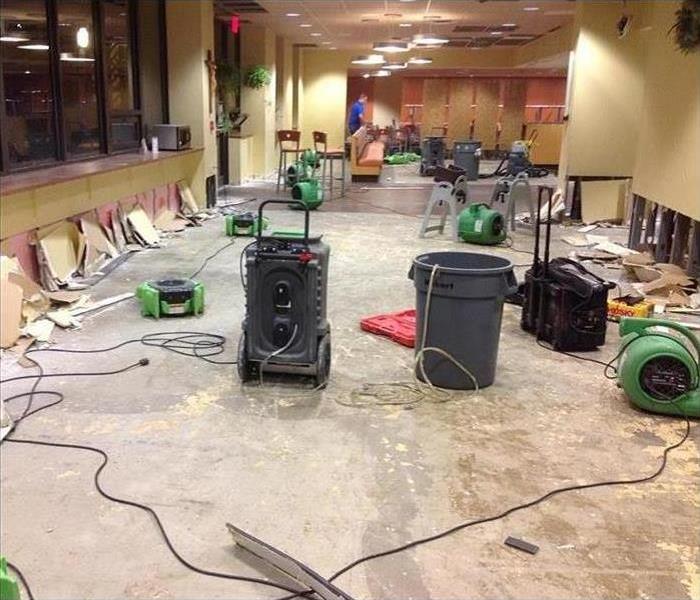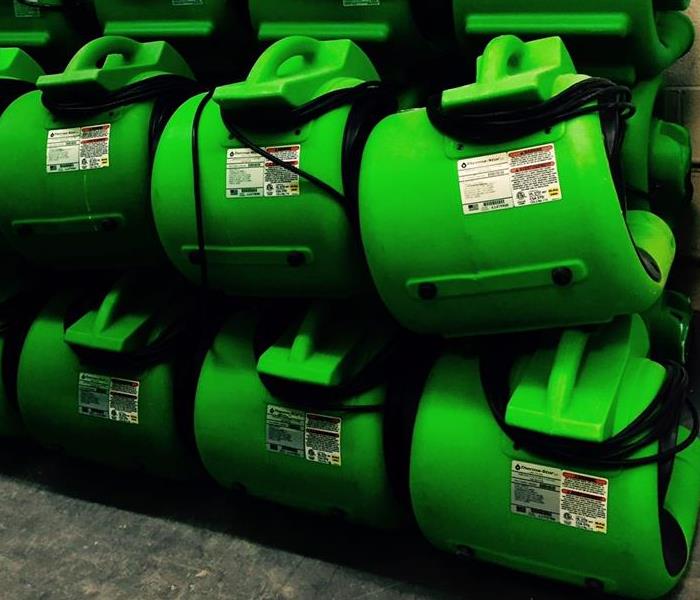Archived Water Damage Blog Posts
Ways to Prevent Water Damage After a Leak
1/17/2024 (Permalink)
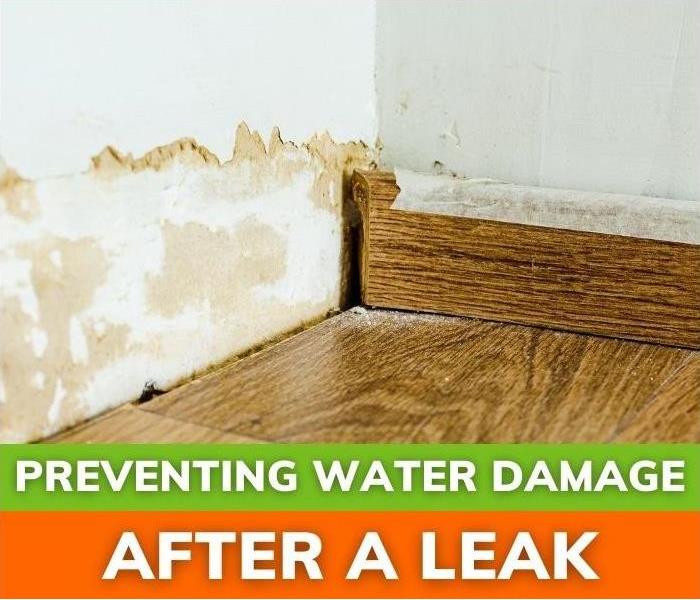 Learn how to prevent water damage effectively after a leak in your home. Essential tips to safeguard your property and avoid costly repairs. Act now!
Learn how to prevent water damage effectively after a leak in your home. Essential tips to safeguard your property and avoid costly repairs. Act now!
Plumbing leaks are some of the most common problems in homes and businesses across California and the U.S. While some leaks are only mildly annoying, others can turn into plumbing disasters, resulting in water damage, wood rot, and expensive property repairs.
According to data from the Insurance Information Institute, as reported by This Old House, close to 15,000 homeowners across the country experience the effects of water damage daily. The average insurance claim for water damage is somewhere in the neighborhood of $12,000, meaning this type of damage is not trivial when it comes to your wallet.
Preventing Water Damage When Faced With a Leak
The good news is that there are ways to prevent water damage after a leak. In virtually all cases, the sooner you address a leak, the better your chances of preventing water damage, but it’s always important to take some action. Leaks tend to get worse over time; even a small leak can become a flood if left unaddressed.
If you’re concerned about protecting your property, below are some ways to prevent water damage after a leak:
Call a Professional
Often, the best way to stop water leaking into walls and floors is to contact a professional at the first sign of trouble. Some signs of water damage can include damp carpets or water stains on walls, but you may also notice mold growth along baseboards or a musty, moldy smell in the air.
If you believe that you have mold growth, you may need more than just a plumber. While a plumbing company can deal with the leak itself, a mold damage company is going to be the solution for water damage repair involving mold growth. These companies may also help remove water pooling after a serious leak or flood, but you will need to ask your mold remediation technician about this option when you schedule service.
Turn Off Your Water
If you can’t get a professional to your home quickly, you will want to stop leaking water at the source. This usually involves turning off your home’s main water supply, often located under a grate in your yard or at a shut-off valve in a garage, closet, or basement. This can be a good option when you can’t determine how water enters your home.
For example, you may have a leak in your water heater, but that water heater may be located in an area of your home that isn’t easily accessible. Without the ability to check for standing water around your water heater, choosing to shut off the water until a professional can address the situation is often the best idea. Water leak detection services utilize specialized equipment to track down the source of leaks so that targeted repairs can be made.
Contact Your Insurance Company
Your home insurance policy may cover water damage, but this varies from provider to provider and policy to policy. Flood insurance covers serious water damage caused by major leaks in some cases, but you will likely need to add this as special coverage as most general homeowners’ insurance policies don’t include flooding under general claims. Although flood insurance will not directly prevent water damage after a leak, it may cover the cost of repairs related to water damage caused by a leak.
Unfortunately, you can’t add flood insurance retroactively, so you must weigh the pros and cons of carrying this coverage. For many homeowners, the cost of additional flood insurance is worth the peace of mind that comes with knowing that you won’t have to worry about expensive repairs in the event of a water emergency.
Check and Maintain Your Plumbing on a Scheduled Basis
It’s also a good idea to check and maintain your plumbing on a regular basis. Older hoses for things like washing machines that get used often tend to develop leaks after many years of service, and changes in water pressure inside plumbing pipes can cause joints to loosen and leak over time.
By checking and maintaining your plumbing pipes, hoses, and fixtures, you can prevent water damage caused by leaks. Remember that leaks typically cause structural damage slowly over time, and it can be easy to miss signs of damage until something major happens. You can protect your home by creating a plumbing maintenance schedule or having a professional plumbing company maintain your home’s plumbing system.
Install Sensors and Sump Pumps
You can also consider installing wireless sensors to help you get notified of leaks, standing water, and flooding. These devices measure water flow and pressure and can send alerts to your smartphone if a leak or flooding has been detected. Moisture detection sensors may be placed around areas where pipes are located but can also be placed in bathrooms and kitchens.
A sump pump may also be a good idea if you have a basement. These devices automatically pump out excess moisture in low-lying areas of your home if flooding occurs after a leak becomes serious. As an added benefit, sump pumps can prevent flooding in basements during heavy rainfall if moisture seeps into basement areas of your home.
Vigilance is the Key
Although water damage following a leak can seriously threaten your home's structural integrity, vigilance can prevent disasters. By checking your plumbing often, watching for signs of water leaks, and partnering with professionals at the first sign of trouble, you stand a better chance of protecting your home and your health. If you do experience a leak, taking care of it quickly can typically prevent serious damage from occurring, but it’s always a good idea to have a professional check questionable areas for your own peace of mind.
Contact SERVPRO in Alhambra for Fast Restoration Services for Water Damage
If you’re concerned about water damage following a leak in Alhambra, CA, SERVPRO of Alhambra is here to help with comprehensive residential restoration services. Our team of experts is available 24 hours a day.
Stay Safe After a Water Damage
3/2/2022 (Permalink)
This won't be your average, typical blog about what to do to help before SERVPRO arrives. Sometimes these things may seem unnecessary to say but in order to keep our clients safe here are a few things you should NOT do before SERVPRO of Alhambra shows up.
- If you can see that the ceiling is wet, do not turn on celling fans. If the ceiling looks to be sagging please keep out of the room.
- Do not use the TV of other household appliances especially in wet areas of the home.
- DO NOT use your own vacuum to remove water
- Keep all colored objects, books and rugs off of wet carpet and flooring
- Don't leave any wet fabrics or clothing in wet affected areas. Hang them up to dry and keep out of area.
In the event that your home suffers from a water damage call SERVPRO of Alhambra at (626)283-5875
Preventing Refrigerator and Ice Maker Water Damage
3/1/2022 (Permalink)
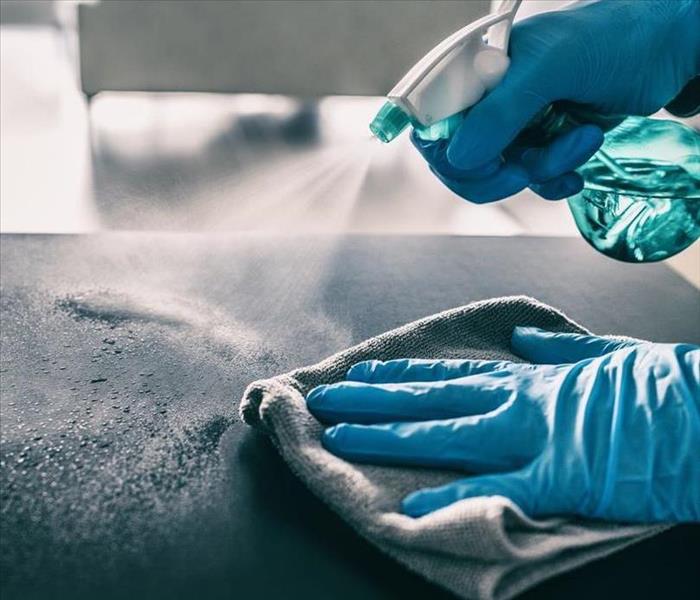 Keep Your Fridge Clean
Keep Your Fridge Clean
Being one of the top restoration companies we have encountered countless refrigerator leaks that have caused massive damages not only to the kitchen, but to the rest of the home as well. This is why we should learn all about the ways to help prevent leaks and damages.
Tips to keep your home safe from water damages:
- From time to time try to remove dust and debris that build up behind the fridge.
- Try to use copper or stainless steel lines for any replacement necessary.
- Make sure to shut off your main water supply before leaving for any long trips.
- Remove hard water build up in the line.
Most times we just fill our fridge and maintain the inside of it from time to time. Let's do our best not to forget about the back and outside of our refrigerator to keep our homes in tiptop shape!
As always, in the case something happens out of your control don't hesitate to call us for help!
SERVPRO of Alhambra (626) 283-5875
Check Your Home For Water Damages
11/15/2021 (Permalink)
It doesn’t matter if you’re buying a home, selling a home, or a happy owner of your home for 10 years, it is still important to identify signs of water damage. Water can not only damage walls, floors, and lead to toxic mold to grow, but it can also cause permanent structural damage to a home. Water damage can be caused by leaks, floods, overflowing water sources, ice dams, accumulation of water in the basement, or leaky appliances. Although water damage can exist anywhere inside a home, there are some important high risk areas to check first. Follow these steps to inspect a house for water damage.
Step 1 - Check the Walls
The simplest way to spot water damage is looking for water stains on the walls and ceilings. You can also check around the window and door frames for stains. Any unusual stains should be taken seriously, as they are most likely a sign of a leaky pipe or drain inside the wall. You can look for cracks in the drywall. An area of wall that has been exposed to water can also have a swollen appearance and be soft to the touch.
Step 2 - Check the Floors
Water damage can happen to any type of flooring and can also seep down to the sub floor. Look for any warping or buckling of the floors, especially in the basement. If the floor looks warped, water damage is most likely the cause. Also be wary of white or dark stains on wood floors, damp carpeting, or a general smell of dampness and mold.
Step 3 - Check the Pipes
Inspect the piping in the kitchen, bathrooms, laundry room, and basement for corrosion around the pipe connections, leaks, or water stains. Inspect the caulking around the bathroom fixtures. Missing or loose caulking could be caused by water seepage. Look for missing grout or signs of mold. Check the water heater for wet spots on the floor and rust on the tank.
Step 4 - Check the Basement
Basement leakage is a common problem found in houses. Water in the basement often causes damage to the flooring, baseboards, walls, and furniture. Additionally, odors caused by mold and mildew can be unpleasant and even cause health effects. Inspect for cracks, stains, rust, dampness, mold, and odors.
Step 5 - Check the Attic
Check the attic for stains, mold, and other signs of leaks. Pay special attention to the valleys where 2 roof planes come together, the flashing where the roof meets the walls, and the flashing around roof vents and chimneys. The insulation should be dry and in good condition. Houses located in cold climates can develop ice dams on the roof, which cause water to leak into the attic from melting snow and ice on the roof.
Step 6 - Check the Exterior
Make sure to check the exterior of the house as well. Check the roof for missing or damaged flashings, cracked, or curled shingles. If you see standing water anywhere outside the home, it could be the sign of a problem. A puddle could be due to poor drainage in the yard, leaky rain gutters, or gutter spouts that don’t take water far enough from the house. The house should be situated on the highest point of the property, with the ground sloping away from the house.
After finishing checking all these steps, if you find something wrong or suspicious, don’t hesitate to contact SERVPRO of Alhambra
Leaky Pipes and More...
10/20/2021 (Permalink)
Leaks from piping, roofs and other overlooked areas can cause water damage, that can go unnoticed for an extended period of time. Attempting to clean up water from a leak can lead to further damage or contamination if not handled properly. Our technicians are highly trained professionals that specialize in water mitigation. Our SERVPRO name means everything to us, and we have been around for some time now. Having a good brand and name you can trust is important. You will always be certain that you are in the best of hands with SERVPRO.
We want you to understand the process, and our teams of technicians will walk you through every step, keep you updated on the progress of the job, and get you back to good.
Water damages can happen at anytime. It is it's always good to know that there is someone that can be there for you no matter what time a day it. SERVPRO of Alhambra is open 24-hours, 7 days a week. We got this.
Spot a Water Damage
8/25/2021 (Permalink)
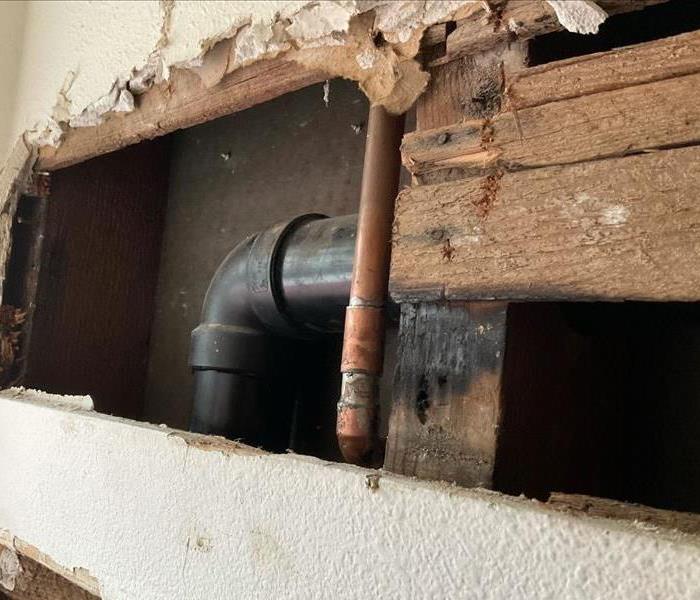 Leaking pipe
Leaking pipe
It is very important to know how to identify water damage, whether you are buying, selling, or renting a home. When water seeps through your property, it can damage walls, floors, and can lead to toxic mold growth. Water damage can also lead to permanent structural damage to your property. Some causes of water damage can be caused by leaks, floods, overflowing water sources, ice dams, accumulation of water in the basement, or leaky appliances. Here are some steps to inspect your property for water damage.
- Walls
-Check for water stains on the walls and ceilings. Any unusual stains should be taken serious as they could be a likely sign of a leaky pipe or drain within the walls. They usually have swollen appearance if there is a water leak within the walls - Floors
-Any warping or bucking of floors, especially in the basement, water damage is very likely. Be also aware of stains on wood floors, damp carpeting, or a smell of dampness or mold. - Pipes
-Check and inspect the pipes in the kitchen, bathrooms, laundry room, and basement for any corrosion. Look for wet spots around water heater and the rust around the tank. - Attic
-Many air conditioners are now in the attic and could cause possible leaks. Check the attic for stains, mold, and other signs of possible leaks. Insulation should also be dry and in good condition.
If you find something wrong or suspicious in your property that may be water damage, call SERVPRO of Alhambra at 626-283-5875 for an inspection!
Improper Grease Disposal
8/25/2021 (Permalink)
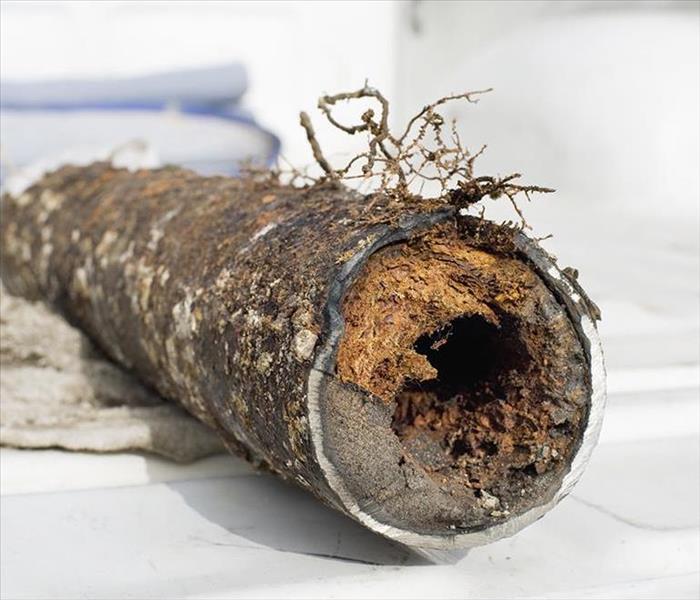 Clogged drain from grease build up
Clogged drain from grease build up
Did you know that improper disposal of Fats, Oils and Grease (FOG) can lead to plumbing clogs and the inability to remove waste from city sewer lines? We may think that because oils and grease are liquids, we can flush them down the toilet or drain them down the sink, but that can lead to major issues in the future.
According to The City of Alhambra’s website, here are a few ways to prevent Fat, Oils and Grease build up:
Preventing FOG Buildup
- Always scrape grease and food scraps from trays, plates, pots, pans, utensils, grills and other cooking surfaces and place them into the trash for disposal.
- Pour fats, oils and grease into a container such as an empty jar or coffee can. Once the materials have cooled and solidified, secure the lid and throw it in the trash.
- Don’t put grease down a garbage disposal. Put drain baskets/strainers in sink drains to catch food scraps and other solids - and empty them into the trash.
For more information on the effects of Fats, Oils and Grease build up visit: https://www.cityofalhambra.org/385/Proper-Disposal-of-FatsOilsGreaseFOG
Commercial Water Damage
7/29/2019 (Permalink)
Water damage can affect and halt your business for days. However, many business owners and entrepreneurs sometimes forget that floods and severe weather aren’t the only culprits of water damage to a business. Here are some typical causes of water damage that happen to business commercial buildings.
- Malfunctioning sprinklers
Many older office and retail buildings might have outdated sprinkler systems where they work in conjunction with fire protection systems. They are good whenever they is a fire emergency, however, they can also cause commercial flood damage if they are faulty and in need of a replacement. These sprinkler systems should be checked annually so that they do not damage business assets or inventory.
- Damaged appliances and equipment
A lot of causes of flood damage are from faulty appliances and equipment such as coffee machines or any machines that involve water. Restaurants and catering facilities are more commonly prone to these problems but any break room facility in businesses can also run into these problems and damage the surrounding area.
- Pipe and plumbing failure
Pipes and plumbing issues are always a big problem, whether it is at a commercial or at a residential building. If the pipes or plumbing fails, water damage could be a result or occur so immediately shut off the water and contact SERVPRO for a thorough inspection and assessment.
If your business runs into any water damage, please call SERVPRO of Alhambra for a free inspection at (626)283-5875.
Common Toilet Issues and Solutions
8/6/2018 (Permalink)
Toilet overflow is a common cause of water damage in homes and commercial buildings. Toilet issues are just as common and can also lead to toilet overflow. Here are some tips to solve some toilet issues so that you can prevent toilet overflow.
- “Phantom Flushes”
Sometimes, you hear your toilet to refill randomly like someone had just flushed it. The cause of this is a slow leak from the tank of the bowl. The problem is most likely caused by a bad flap or flapper seat. The solution is to drain the tank and bowl and then inspect the flapper and clean the flapper seat. You should replace the flapper if it is worn out or damaged.
- Trickling Water
If you hear a prolonged hissing noise coming from your toilet, it might be water trickling from the supply line. To check this, inspect the refill tube and ballock or the inlet-valve assembly. The hissing sound is usually caused by water coming through the inlet valve. To solve this issue, check whether the float is sticking or needs adjusting then check the refill tube isn’t too far into the overflow tube. If neither of these solves the problem, you may need to replace the ballcock assembly.
- Bowl Empties Slowly
This also known as a weak flush, which is a result of a clogged hole underneath the rim of the bowl. Use a curved piece of wire, such as a coat hanger wire, and gently poke into flush hole to clear out any debris. Be careful not to scratch the bowl.
- Clogs
These are the most common toilet problems that people have. A force-cup plunger is a very effective way to clear minor clogs. For serious clogs, use a closet auger. You would insert the end of the auger into the drain hole and then twist the handle and make sure to try to not scratch the bowl.
If you experience any toilet overflow that may have caused water damage in your property, please call SERVPRO of Alhambra to give you a free estimate at (626)283-5875!
SERVPRO of Alhambra's Water Damage Process
8/1/2018 (Permalink)
There are many different ways that water can unexpectedly get inside your home or property. It is a regular occurrence in life that things break, especially when water pipes or certain appliances break or malfunction.
Once water gets inside a building, many different types of damage can occur. SERVPRO’s technicians in Alhambra have experience in dealing with moisture in several different scenarios. It is essential that all moisture gets removed within a 48-hour window so that mold growth does not occur.
When mitigating problems having to do with excessive water, our SERVPRO experts use many different methods and equipment. All of the equipment and methods used are IICRC certified and proven to work well in the restoration industry. We always use different equipment depending on the aspects and severity of the damage situation.
When we first arrive to a water restoration project, we start by testing moisture levels inside the building. We use state-of-the-art detection devices to identify where water has intruded into the structure.
Next, we use specialized extraction equipment to pull moisture out of materials and contents inside the home. The extraction equipment consists of an extractor with a high powered vacuum motor. A vacuum tube then runs to an extraction tool that gets used to pull out the water.
After water gets extracted from the building, we use carpet tools to disengage the carpet and separate seams so that we can pump air underneath it and “float” the carpet. We then use different tools to reinstall the carpet pad and seams after drying is complete. Next, we use drying equipment to return moisture levels to normal conditions.
Air moving equipment causes evaporation to speed up the drying process. Dehumidifiers get used to remove water vapor from the air. After drying gets completed, we use deodorization equipment to apply professional products and treat foul odors.
If water damage occurs on our property, contact SERVPRO of Alhambra at (626)283-5875 for a free estimate!
Types of Water Damage Categories
5/24/2018 (Permalink)
Water damage can be a scary event that happens to your home or business and can promote deterioration of structures and mold growth. There are also three categories of water that you should know about before figuring out if you can handle it yourself. SERVPRO of Alhambra can also provide a free estimate and whether or not you should put a claim in with your insurance.
The first type of water damage is called “clean water.” Clean Water will come from a clean and sanitary source such as faucets, sinks, bathtubs, toilets or any broken water supply lines. However if you ignore the water, it will not stay clean since it comes into contact with other surfaces or materials. This type
The second type of water damage is called “Grey Water.” It is a source of water that contains a significant degree of either chemical, biological or physical contaminants. It may cause discomfort and illness when you consume it or if you’re just exposed to it. It can carry unsafe levels of microorganisms such as bacteria, fungi and algae. This includes water from dishwashers, washing machines, sump pumps, toilet bowls (that doesn’t contain any feces), and flush sink drains.
Black water is the third category of water which comes from a source of water that is unsanitary. It contains unsanitary agents that can cause severe discomfort and sickness. It is any outside water that has now affected the indoor environment. For example, black water can range sea water, rivers and streams to sewage and groundwater. Any toilet back flow regardless of color and overflow with feces is categorized as black water.
Time and temperature can affect the quality of water, thereby changing its category. Any stagnant water can harbor bacteria. So if you ever experience water damage, don’t hesitate to call SERVPRO of Alhambra to help with your water extraction and/or dehumidification.
Category 3 Water
2/8/2018 (Permalink)
If you are a home owner or a property owner, you probably heard that there are different categories of water. Category one water is referred to as liquid that comes from a clean source such as pipes, toilet tanks, or faucets for example. This category of water is usually safe to handle and clean. Category two, also known as grey water, is categorized as liquid that has been contaminated such as dishwater that has been backed up or dishwasher overflow. This category of water may cause illness or discomfort. Category three water, also known as black water, is water that has been contaminated by feces or dangerous bacteria or viruses. The sources of these can be from backed up sewage, flooding from rivers or streams, toilet overflow with feces, or contact with water that support bacterial growth.
Another example of how water can become Category three very quickly is if a pipe burst with clean water but then comes in contact with dog feces, which floods the entire room. This immediately puts the water into a category three, which is biohazardous because of the possible harmful bacteria growth.
Sewage backup is one the most common Category three water causes. Sewage backup are usually caused by clogs, which creates a sewage backup through the pipes. Sewage is a mixture of both water and human waste. This can be very dangerous because the waste can contain diseases and gases that are harmful to human health.
Preventing Basement Sewage Backup
2/8/2018 (Permalink)
Now that winter is now here, it is time to start thinking about rain storms and the potential damage it can cause if your home is not prepared in advance. And because sewage backup can be harmful to you and your family’s health, here are some ways to prevent your property from sewer backup:
- Floor drain plug
- One way drain plugs can be used to prevent water from backing up due to overloaded sewers. If using one, always make sure that the floating mechanism is free from any debris that could prevent its proper function.
- Standpipe
- A standpipe is an ordinary pipe that is taller than other pipes and is surrounded by a rubber seal. Any water that would rise out of the drain would go into the pipe and when flood conditions are no longer a threat, the standpipe can be removed, which can allow any water spillage to drain.
- Overhead Sewer
- If you have a basement, getting an overhead sewer is one of the best ways to prevent the basement from flooding.
- Backwater Valve
- Installed at the exit point from the building, it is an underground pipe that connects to the sewer line. This is a pricey solution since it involves getting a permit and requiring a licensed plumber to do this but it can save you thousands of dollars in case of a sewage backup.
Water Mitigation
1/22/2018 (Permalink)
Water mitigation is the process of reducing or preventing the amount of water damage that happens after a flood or a permeating leak. It prevents additional damage by taking fast, appropriate actions. Water mitigation is normally needed after plumbing failures or when storms cause water to rush into your home. Soaked rugs, damaged walls, warped flooring and ruined furniture are only the beginning if mitigation is not engaged quickly.
Normal store-bought vacuums or companies with only carpet drying equipment cannot prevent water from wicking up walls, under baseboards and molding or into sill plates. Water will penetrate through floor coverings into subfloors, eventually causing damage to rooms below.
If internal building humidity is not controlled, undamaged objects safe from the original flood damage could be ruined as a result of absorbing moisture from the air. Structures not dried out quickly enough or properly will become a food source for mold, later causing a need for even more professional mold removal services.
Specific steps are taken to reduce property destruction, to prevent further water damage and to restore your property to its full value. SERVPRO of Alhambra works with your insurance company so you don’t have to stress. We help you determine the details of your insurance policy and coverage concerning a major loss. Response time is crucial to preventing further damage, including mold damage. Any delay can lead to a much more costly recovery, salvage and reconstruction. Begin repairs to your home promptly following the cleanup services. Call SERVPRO of Alhambra at 626-283- 5875 today to help you with your water mitigation needs!
Alhambra 24 Hour Emergency Water Damage Service
1/12/2018 (Permalink)
SERVPRO of Alhambra is available 24 hours a day for water emergencies, large or small. When you are dealing with water damage, immediate action is crucial. A delay of just a few hours can greatly increase the severity of the water damage.
We Answer the Phone Ready to Help Call Today – (626) 283-5875
We understand that when you call us, you may be feeling confused, stressed, and vulnerable. You need an expert to guide you through this crisis. SERVPRO of Alhambra has the specific water damage training and experience to help you through this tough time. We specialize in water damage restoration—in fact, it's the cornerstone of our business.
What to Expect
When you call, we will ask several questions regarding your water damage emergency. These questions will help us determine what equipment and resources to bring, including how many trained SERVPRO Professionals may be needed.
Our SERVPRO Representative will ask several questions:
- Your name and contact information
- Your insurance information (if applicable)
- The street address of the water-damaged home or business
- When did the flooding or water damage occur?
- What caused the water damage (if known)?
- Is there electricity available (on-site)?
About SERVPRO of Alhambra
SERVPRO of Alhambra specializes in the clean-up and restoration of residential and commercial property after a fire, smoke or water damage event. Our staff is highly trained in property damage restoration. From initial and on-going training at SERVPRO’s corporate training facility to regular IICRC-industry certification, rest assured our staff is equipped with the knowledge to restore your property.
Three Categories of Water Damage
5/24/2017 (Permalink)
Water damage can be a scary thing if you don't know what you’re dealing with. Before you stress and freak out, here are some facts to help you determine how bad the water damage actually is.
Category 1 - “Clean Water”
Clean water comes from a source that does not serve as a potential threat. It will come from a clean and sanitary source such as faucets, sinks, bathtubs, toilets or any broken water supply lines. However if you ignore the water, it will not stay clean since it comes into contact with other surfaces or materials.
Category 2 - “ Grey Water”
Grey Water is a source of water that contains a significant degree of either chemical, biological or physical contaminants. It can cause discomfort and illness when you consume it or sometimes if you’re just exposed to it. It carries unsafe levels of microorganisms such as bacteria, fungi and algae. This includes water from dishwashers, washing machines, sump pumps, toilet bowls (that doesn’t contain any feces), and flush sink drains.
Category 3 - “Black Water”
Black water comes from a source of water that is unsanitary. It contains unsanitary agents that can cause severe discomfort and sickness. It is any outside water that has now affected the indoor environment. Sources can range sea water, rivers and streams to sewage and groundwater. Any toilet back flow regardless of color and overflow with feces is categorized as black water.
Time and temperature can affect the quality of water, thereby changing its category. Any stagnant water can harbor bacteria. So if you ever experience water damage, don’t hesitate to call SERVPRO of Alhambra to help with your water extraction and/or dehumidification.
 Learn how to prevent water damage effectively after a leak in your home. Essential tips to safeguard your property and avoid costly repairs. Act now!
Learn how to prevent water damage effectively after a leak in your home. Essential tips to safeguard your property and avoid costly repairs. Act now!





 24/7 Emergency Service
24/7 Emergency Service



